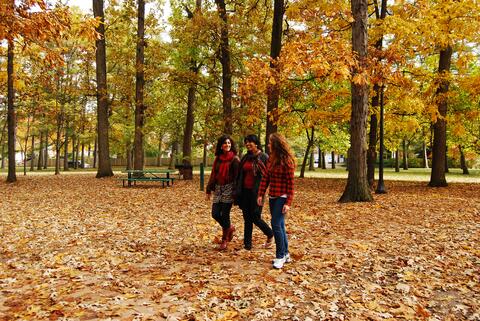

The Department of Natural Resources & Environmental Sciences (NRES) focuses on science, applied ecology, and conservation in a variety of aquatic, terrestrial and human dominated ecosystems.
To put it simply, we’re focused on saving the world.
As the global society becomes increasingly focused on more environmentally friendly and sustainable practices, our graduates are in demand to coach companies on better practices, conserve what resources we have, and shepherd in logical regulatory changes.
Our undergraduate and graduate degree options prepare students for these careers with programs centered on wildlife, natural resources, and human interactions with the environment. While many alumni of our bachelor’s of science program have gone on to complete graduate degrees, the majority dive straight into their career paths.
An Established Reputation
We are one of the longest-running environmental degree programs in the United States! The Natural Resources & Environmental Sciences (NRES) Department was founded in 1995. It formed from a merger of the Department of Forestry (est. 1938) and the Agronomy Department (est. 1899).
The nearby Illini Grove, established in 1868, is the first experimental forest plot in Illinois. The Morrow Plots were established in 1876 and are the oldest agricultural experimental fields in the U.S.
Research
Our research programs actively address critical environmental issues facing the world.
NRES world-renowned faculty represent a unique mix of disciplines ranging from ecologists to economists. This diversity fosters a deep understanding of the complexities of modern environmental issues and their solutions.
Our research looks into natural and social processes, such as habitat fragmentation, regulation, dispersal, disturbance, invasion, bioactivity, and decision-making. NRES also maintains key partnerships to ensure our research continues to best serve our local, regional, and global communities.
What we learn through our research becomes basis for our many outreach programs which serve to provide our communities with the resources to learn about forestry, horticulture, natural resources, and sustainable agriculture.
Quick Facts

Degrees & Professional Development Offered:
- B.S., M.S. (online or traditional), PhD, Joint Law Degree
- Professional Development Certificates (online)
Undergraduate Students Per Concentration: (296 total)
- Fish, Wildlife & Conservation Biology: 94 students
- Ecosystem Stewardship & Restoration Ecology: 72 students
- Environmental Science & Management: 70 students
- Human Dimensions of the Environment: 60 students
Average class size: 37 students
Average lab size: 19 students
Faculty & Research:
- 26 Faculty; 49 Affiliated Faculty
- 17 Research Labs; 9 Research Areas, conducted worldwide
- Over $12.3 million in research expenditures (AY21-22)
Graduate Students: (234 Total)
- 101 traditional M.S. candidates
- 90 online M.S. candidates
- 33 PhD candidates
Title
See for Yourself
As part of the College of ACES, our students, faculty, and staff get to experience the feeling of a small school community while taking advantage of Big Ten campus opportunities. If you have questions or want to learn more about NRES, we want to help.